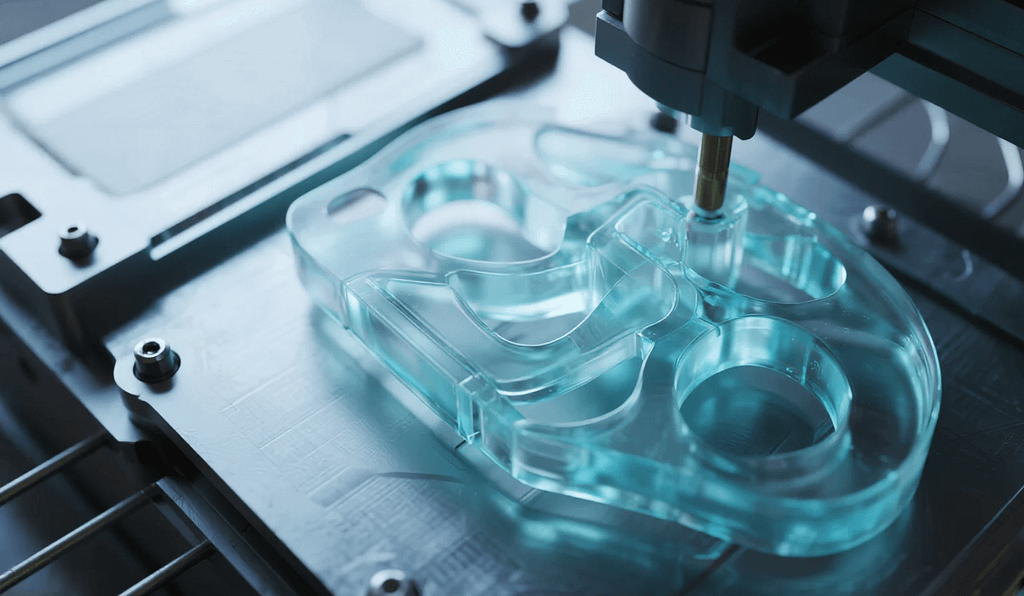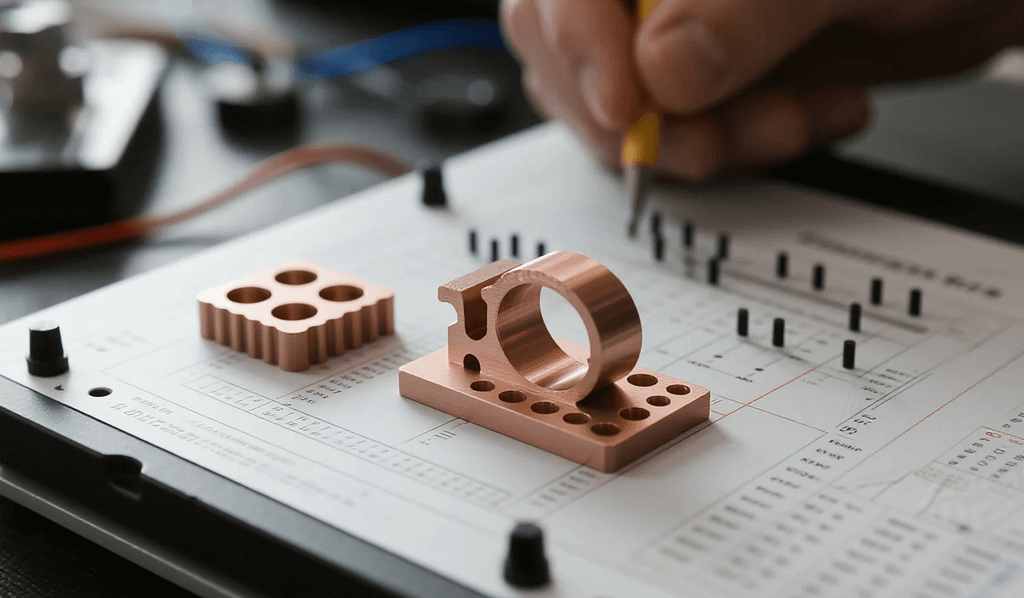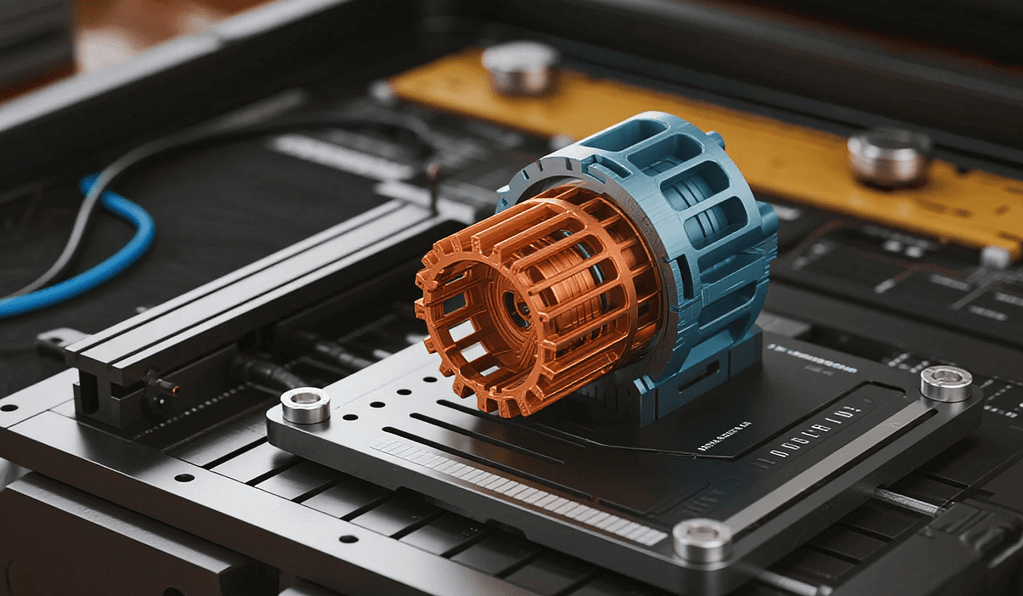For decades, the manufacturing world has relied on tried-and-true methods like CNC machining and molding, which typically involve removing material to create a final product. This “subtractive” approach has a rich history, but it’s no longer the only or even the best solution for every challenge. Today, a new paradigm is changing how we design and build. This brings us to a crucial question: What exactly is the additive manufacturing definition, and why is it so vital for the future of precision engineering?
At its core, additive manufacturing (AM), often referred to as 3D printing, is the process of building three-dimensional objects by adding successive layers of material. Think of it as constructing a sculpture with a digital tool, where each layer of material is precisely placed on top of the last until the final, intricate object is complete. This is in stark contrast to subtractive methods, which start with a solid block of material and carve away what isn’t needed. The American Society for Testing and Materials (ASTM) provides a more formal additive manufacturing definition: “the process of joining materials to make parts from 3D model data, usually layer upon layer.” This simple concept unlocks a world of design freedom and efficiency that was previously unimaginable.
The Fundamental Principles of Additive Manufacturing

To truly grasp the power of AM, it’s important to understand the principles that drive it. This isn’t just a single technology but a family of processes, each with its unique capabilities. While the materials and methods vary, they all share a common workflow:
First, a digital 3D model of the part is created using computer-aided design (CAD) software. This model is then converted into a file format like an STL, which is a digital representation of the object’s geometry. Next, specialized “slicer” software takes this file and virtually divides the object into hundreds or thousands of thin, horizontal layers. This is the crucial step where the “additive” process is planned. The software generates instructions for the 3D printer, dictating the exact path and amount of material to deposit for each layer.
From here, the physical printing begins. Depending on the process—whether it’s Powder Bed Fusion for high-performance metals or Material Extrusion for polymers—the machine meticulously builds the part one layer at a time. This layer-by-layer approach allows for the creation of geometries that are incredibly complex, often with internal structures and intricate details that would be impossible to produce with traditional machining. The final step is post-processing, which can include everything from removing support structures to heat treatments that enhance the part’s mechanical properties, ensuring it meets the stringent quality requirements of precision manufacturing.
The Advantages and Disadvantages of AM in Precision Engineering

The Benefits of Adopting an Additive Mindset
In precision engineering, where tolerances are measured in microns and performance is non-negotiable, AM is not just a trend—it’s a powerful tool. One of the most significant advantages is design freedom. By adding material instead of removing it, engineers can create parts with complex internal lattice structures that dramatically reduce weight while maintaining or even increasing strength. This is particularly valuable in aerospace and medical applications where every gram counts. Additionally, AM facilitates part consolidation, allowing a single, complex component to replace an assembly of multiple traditionally manufactured parts, which in turn reduces assembly time, simplifies supply chains, and lowers the risk of failure.
Another key benefit is rapid prototyping and faster time to market. With AM, a new design can be fabricated and tested in a matter of days, not weeks or months. This accelerates the design iteration cycle, enabling engineers to quickly validate concepts and make improvements. This speed, combined with the ability to produce on-demand parts, also significantly reduces the need for large, expensive inventories. By manufacturing parts only as they are needed, companies can lower warehousing costs and minimize waste.
The Challenges to Consider
Despite its transformative potential, AM is not a silver bullet. One of the primary challenges is material availability and cost. While the range of materials for AM is growing, it is still not as broad as that for traditional manufacturing methods. High-performance metal powders and specialized polymers can also be more expensive. Furthermore, achieving the ultra-tight tolerances required for many precision applications can be difficult. As-printed parts often have a rough surface finish and may require extensive post-processing, such as CNC machining, to meet the desired specifications. This is where hybrid manufacturing comes into play, combining the geometric freedom of AM with the precision of subtractive methods.
Finally, while AM is perfect for low-volume production and complex parts, it may not be the most cost-effective solution for large-scale, high-volume production of simple components. Traditional methods like injection molding are often faster and cheaper for producing millions of identical parts. Therefore, the choice between additive and subtractive manufacturing requires a careful evaluation of the specific application, material, and production volume.
Additive Manufacturing for Industrial-Scale Precision

The true power of the additive manufacturing definition is not in hobbyist printers but in its industrial applications for creating high-performance, end-use parts. This technology has matured to a point where it is a cornerstone of advanced manufacturing in critical industries.
In the aerospace sector, AM is used to produce lightweight components for aircraft and spacecraft, such as turbine blades, brackets, and fuel nozzles. These parts are topologically optimized, meaning their design is based on the forces they will experience, resulting in structures that are stronger and more efficient. For example, a conventionally manufactured part might have a solid interior, while an AM part can have a honeycomb or lattice structure that provides the same strength with less material, leading to significant fuel savings.
Similarly, the medical industry is a major beneficiary. AM allows for the creation of patient-specific medical implants, surgical guides, and even prosthetics. A hip implant, for instance, can be custom-designed to perfectly match a patient’s bone structure, improving fit and promoting faster healing. The ability to create complex geometries and porous surfaces encourages bone ingrowth, leading to better long-term outcomes. This level of customization is simply not feasible with traditional manufacturing.
In the tooling and fixturing space, AM is used to create complex jigs and fixtures that streamline assembly lines. These tools can be quickly designed, produced, and modified, offering a level of flexibility that greatly reduces lead times and costs. It’s a testament to how AM has transitioned from a prototyping tool to a full-fledged production method, capable of creating reliable, functional components that meet demanding industrial standards.
The Future of Additive Manufacturing
Looking ahead, the evolution of AM is focused on improving process repeatability, expanding the material palette, and integrating with other digital manufacturing technologies. Automation and in-situ monitoring are becoming standard, ensuring that every part is manufactured with consistent quality. The synergy between AM and traditional methods, particularly through hybrid systems, is also set to become more common, offering the best of both worlds. For precision manufacturers, embracing the true additive manufacturing definition means more than just adopting a new machine; it means rethinking how products are designed, developed, and produced. It’s about a commitment to innovation, sustainability, and pushing the boundaries of what is possible.
Frequently Asked Questions
What is the difference between additive and subtractive manufacturing?
Additive manufacturing builds parts by adding material layer by layer, while subtractive manufacturing removes material from a solid block to create a final part. Examples of additive are 3D printing and laser sintering, while subtractive examples include CNC milling and turning.
Is additive manufacturing just for prototyping?
No. While AM began as a rapid prototyping technology, it has evolved significantly. Today, it is widely used for producing complex, high-performance, end-use parts in industries such as aerospace, medical, and automotive.
What are some common materials used in additive manufacturing?
Common materials include a wide range of polymers (plastics), metals (like steel, aluminum, and titanium), ceramics, and composites. The choice of material depends on the specific AM process and the desired properties of the final part.
How does additive manufacturing help reduce waste?
By building parts layer by layer and only using the material that is needed, AM significantly reduces material waste compared to subtractive methods, where a large portion of the initial material block is often machined away. This is a key advantage for sustainability.